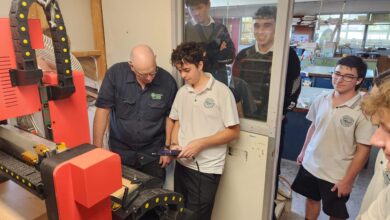Balancing the benefits of BYOD policies in primary schools

The New Zealand Ministry of Education’s recently published study showing that computer or tablet-based learning in Year 5 students reduces children’s reading enjoyment, as measured by data from the Progress in International Reading Literacy Study (PIRLS) showed that New Zealand students have the greatest access to computers, but the lowest reading scores among the eight OECD countries surveyed.
It seems that in primary schools, New Zealand has adopted screen use in education far more readily than other countries but has so far failed to prove that devices are improving teaching and learning. It is encouraging that the MoE is investigating this topic, when online learning is increasing and impacting so many New Zealand children.
International research has also shown that tablet-based learning has had negative impacts on reading and several other areas of learning as well, particularly for children in this age group. A large-scale study, looking at National Assessment of Educational Progress (NAEP) data across the whole of the USA, compared academic outcomes with time spent learning on computers in Grade 4 (Year 5 equivalent) students. They found that tablet use was associated with lower performance. For reading, students who used tablets in some classes, compared to those who never did, scored slightly lower on reading exams; those who used tablets frequently were a full year’s reading level behind and up to three years for some. These trends were held across all states, and across all schools with different socio-economic profiles.
The report stated, “Scores for tablet-related activities, like games and apps, are similarly dismal. For reading-related apps, educational games and electronic textbooks, more usage is clearly associated with worse scores. This raises questions about the value of these approaches as a basis for instruction.”
It added, “Experts have recommended limiting the use of technology for younger children. Health agencies have warned against early exposure to computer technology, both inside and outside the classroom. Elementary (primary) schools should be particularly careful, and leaders making policies for schools that enrol younger children should be wary about flooding them with technology.”
OECD and Australian data has shown that more frequent computer use, and BYOD policies at primary school level respectively, led to a decline in digital skills.
Digital technologies do present opportunities to enrich learning; such as the ability to contact experts, present data and research, to name just a few.
However, the digital divide does need to be addressed; not only through the Government’s initiative to provide access to computers for high school students, but also by tackling wider inequities. Some students have families with more time, skills and resources to teach them how to use digital technologies than others, for example.
But this latest study by the MoE has found that computers were available for 93 per cent of students here, significantly higher than the international average of 44 per cent. Writing on tablets had the strongest link to reduced reading enjoyment, and the frequency of digital teaching also had a significant negative impact.
Research has also shown differences in the way we read in print and online; and differences in the way we learn and remember when handwriting compared to typing. Because of this, experts such as Professor Maryanne Wolf have recommended that at primary school age, until fluency is achieved, we need to be teaching core skills in analogue (traditional) methods, alongside the exciting areas of digital technologies such as coding, programming, 3D printing.
In a recent article, Dr Arran Hamilton reflected on a review he conducted with John Hattie about the effectiveness of education technology entitled, ‘Not all that glitters is gold.’ He noted that, “One thing that sticks out like the proverbial sore thumb when we review global education data, is the disconnect between claims made about the effectiveness of educational technology and the actual evidence of impact for certain types of products and platforms… The challenging conclusion is that the impact of almost all types of technologies (on learner achievement in standardised tests) is only on average half of what could be realised by good old-fashioned human-to-human interactions…”
What many New Zealanders may not have realised until now, is that our use of computers in the classroom is, overall, the highest in the world.”
In 2015, New Zealand was in the top few countries in the OECD with the highest use of screens in schools. However, by 2019, other OECD countries had slightly reduced their use, while NZ, relatively, had a ‘huge increase’ in computer use in classes. We now even have organisations, while well intended, converting our primary schools to digital immersion programmes.
This gives us more reason to question BYOD policies, and the need for schools to ask parents to purchase personal devices for children as young as seven or eight years old. That is without considering issues of financial cost, inappropriate content access, documented health risks and parental supervision required when giving young children personal devices. As noted by an Auckland solicitor – schools, principals and Board of Trustees may also need to consider liability if complaints are made, when information and evidence of risk is increasingly being presented (see ‘Who is responsible if a child is harmed by screen use in school?’).
In 2019, I had the chance to meet and talk with teachers internationally about this topic and, while there can be differences between schools, many were surprised at New Zealand’s approach towards screen use in education.
In Germany, the teachers I spoke with said they considered app-based learning in primary school an ‘American fad’. They reported that in their classrooms, children’s screen use for learning was minimal up to around eight years old. After this point, they would introduce one or two afternoons of researching and project-based learning, and maybe a module of specific digital skills training such as coding/programming etc. Computer use in class would then increase gradually. In The Netherlands, it is not uncommon for high school students to share laptops in class and have textbooks for each subject; a practice which isn’t considered unprogressive. Teachers described this as the most common approach, even for more senior students, stating their understanding was that ‘a mix is best.’
The use of digital devices in New Zealand primary schools has been well-intended; a response to fear that children will be ‘left behind’ in a world where they need digital skills; a reaction to exciting claims made by the ed tech industry of personalised learning and improved outcomes; and maybe even due to the ease in class management, where children are engaged with tablets, freeing teachers to work with a small group. But while this latter example may be a common justification, it is worth questioning if this is a good enough reason. Frequent device use can come with risks not only to health, but of reduced learning outcomes and enjoyment of reading. To get the benefits that digital technologies can offer to our children’s learning, we need to have moderate, purposeful and evidence-based use of devices in schools.






